Are you passionate about public health and making a difference in your community? Writing a public health advocacy letter is a powerful way to communicate your concerns and push for change. It's an opportunity to raise awareness about important health issues and inspire action among decision-makers. So, if you're eager to learn how to craft an impactful letter that can drive change, read on!
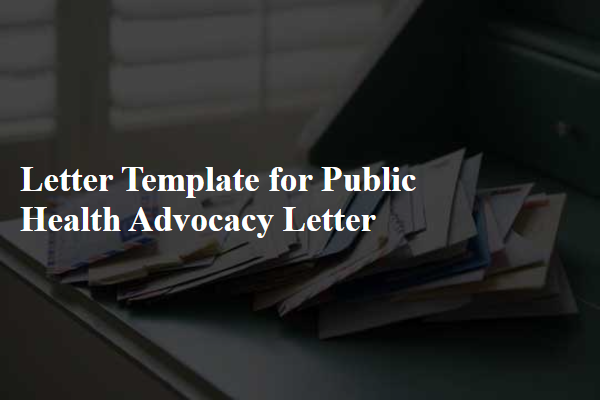
Clear and concise purpose
Public health advocacy plays a crucial role in addressing pressing health issues within communities. Effective advocacy requires clear objectives, such as promoting vaccination programs to prevent outbreaks of diseases like measles, which affected over 350 children in the United States in 2020. Engaging in educational initiatives aimed at reducing smoking rates among adults, where approximately 20.6% of the population in the U.S. are smokers, can significantly lower the incidence of lung cancer. Additionally, advocating for mental health resources in underserved areas, where mental illness rates soar, including the alarming statistic that 1 in 5 adults experience mental illness annually, can lead to improved overall community health outcomes. Each of these goals emphasizes the importance of strategic communication and collaboration with local organizations to foster healthier environments and informed populations.
Evidence-based information
Public health advocacy relies heavily on evidence-based information to influence policy decisions and improve community health outcomes. Research studies underscore the effectiveness of vaccination programs in reducing disease prevalence by over 90% in regions such as Sub-Saharan Africa, where measles cases have plummeted due to the implementation of widespread immunization initiatives. Data from the World Health Organization (WHO) demonstrates that effective public health campaigns can reduce smoking rates by up to 50% within a decade, significantly lowering the incidence of lung cancer and heart disease. Access to clean drinking water has been shown to decrease waterborne illnesses by 35%, particularly in developing countries where sanitation infrastructure is limited. Utilizing peer-reviewed journals and reliable health statistics, advocates can create compelling narratives that highlight the urgency of funding for preventive health measures, ultimately persuading legislators to prioritize public health initiatives that protect vulnerable populations in urban and rural settings alike.
Call to action
Advocating for public health measures, communities can significantly improve outcomes for diseases such as diabetes, heart conditions, and obesity, which collectively affect millions. Emphasizing preventive care, such as accessible screenings and vaccinations, could prevent the spread of infectious diseases like influenza and COVID-19, saving thousands of lives annually. Implementing policies that support mental health initiatives, especially for vulnerable populations in urban areas, fosters long-term well-being and reduces healthcare costs. Mobilizing support for local health programs in places like New York City or Los Angeles can enhance community engagement and resilience. Mobilizing resources, increasing awareness about nutrition, and promoting accessible fitness programs, particularly in underserved neighborhoods, is crucial for building healthier futures.
Targeted recipient
Public health initiatives can significantly improve community health outcomes, particularly in underserved populations. According to the World Health Organization, disparities in health access and quality contribute to preventable diseases, with areas like rural Appalachia reporting higher rates of chronic conditions (up to 30% higher than urban regions). Addressing these disparities requires targeted funding (potentially increasing by 20% in the next budget) for preventive care programs. Furthermore, campaigns promoting vaccinations and awareness about mental health resources can reduce incidence rates of illnesses such as depression and anxiety, which affect nearly 1 in 5 adults annually. Enhancing public transportation options can also improve access to healthcare facilities, with studies indicating a 15% increase in appointment attendance when transportation barriers are minimized. Engaging communities through education and outreach can lead to a healthier, more informed populace.
Positive and collaborative tone
Public health initiatives play a crucial role in improving community well-being, particularly through programs addressing vaccinations, nutrition, and mental health awareness. Successful campaigns, like the 2020-2021 COVID-19 vaccination drive, showcased the importance of public engagement and trust in health authorities. Community events such as health fairs and workshops foster connections between local health organizations and residents, promoting preventive care and healthy lifestyle choices. Partnerships between schools and healthcare providers enhance access to essential services, ensuring families receive necessary support and information. Additionally, ongoing collaboration with policymakers can result in improved health policies that reflect the needs and concerns of the community, ultimately leading to a healthier population.
Letter Template For Public Health Advocacy Letter Samples
Letter template of public health advocacy for community health awareness.

Letter template of public health advocacy for mental health support services.
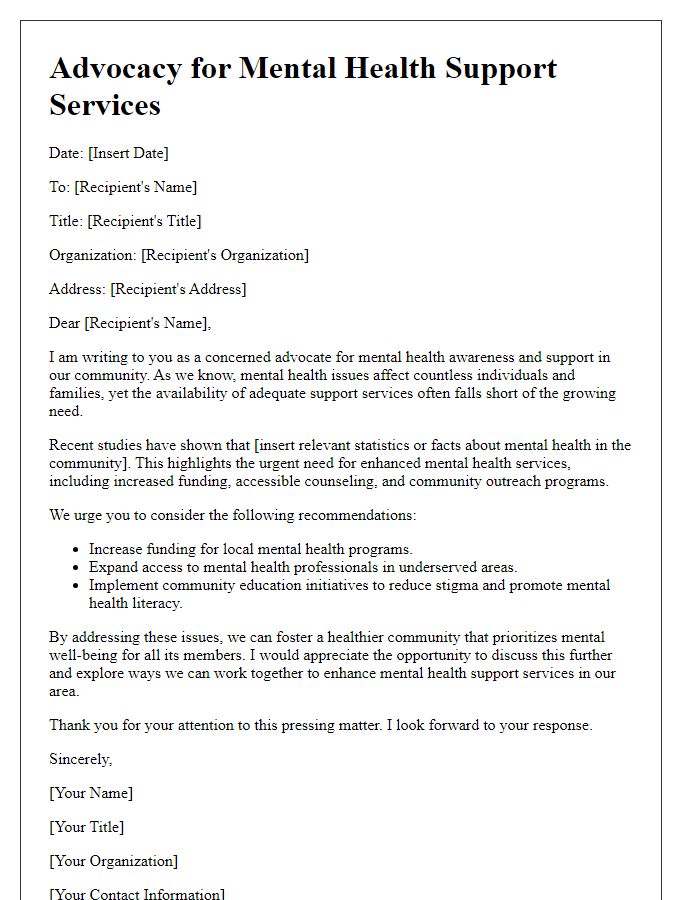
Letter template of public health advocacy for environmental health initiatives.
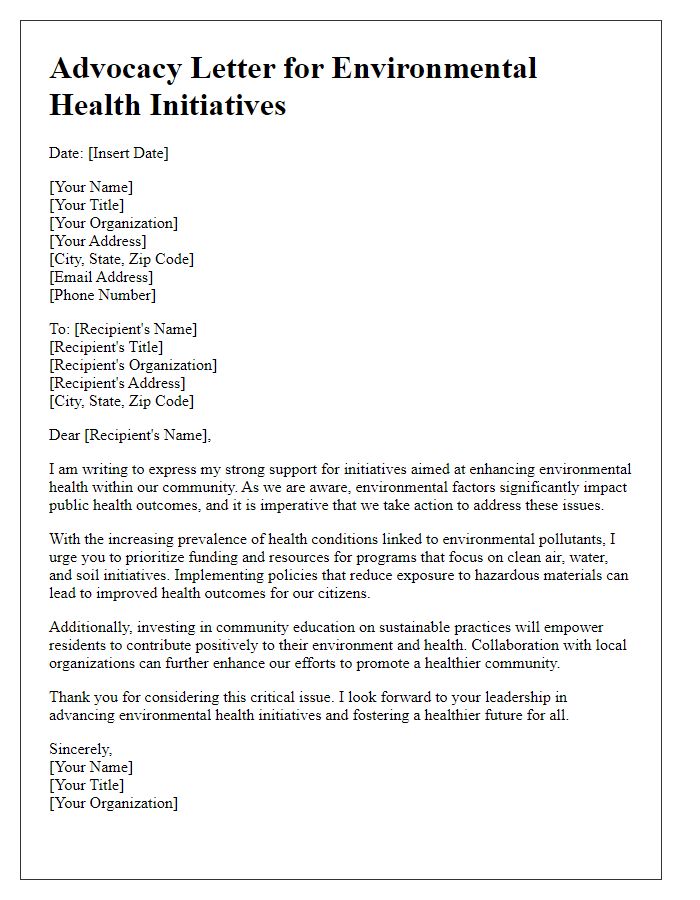
Letter template of public health advocacy for chronic disease prevention.
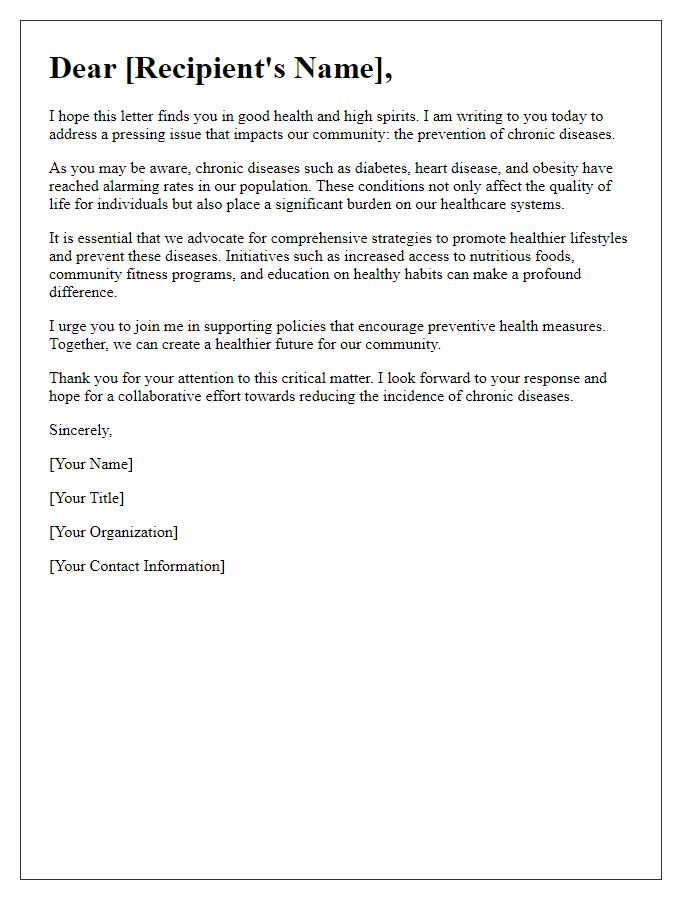
Letter template of public health advocacy for access to nutritious food.
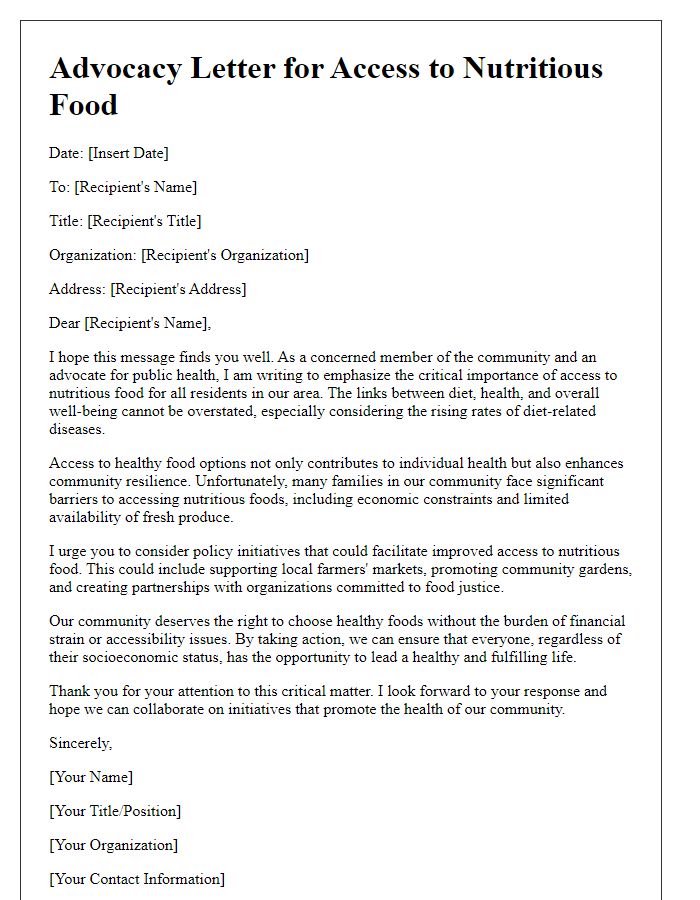
Letter template of public health advocacy for substance abuse treatment programs.
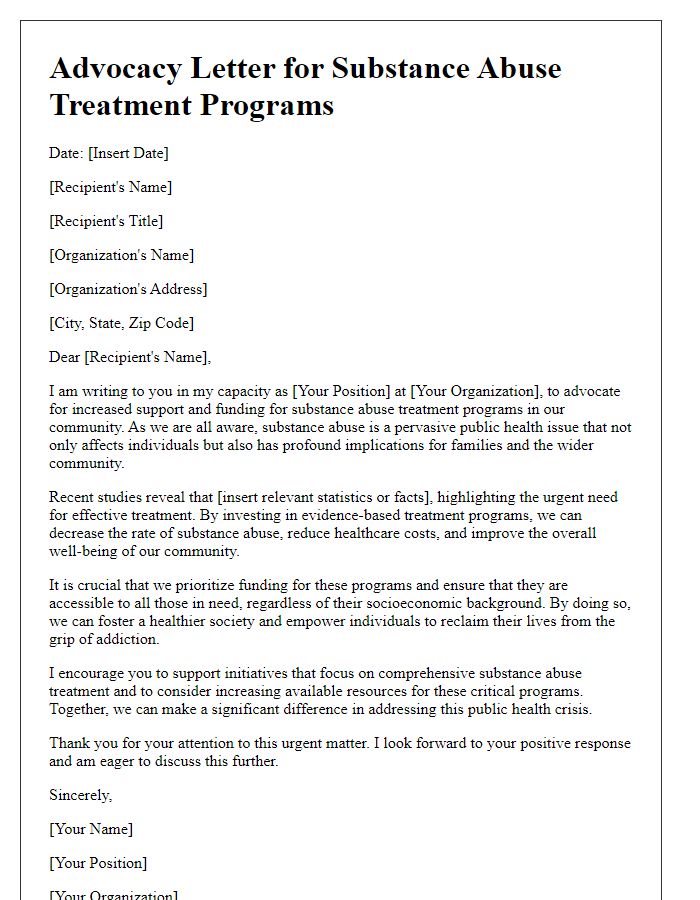
Letter template of public health advocacy for health education in schools.


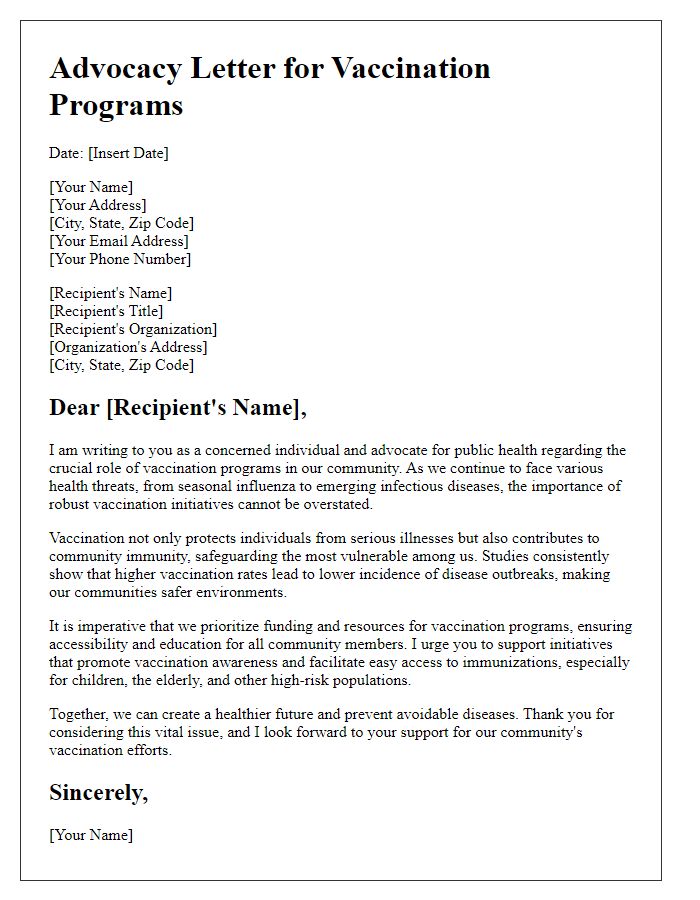
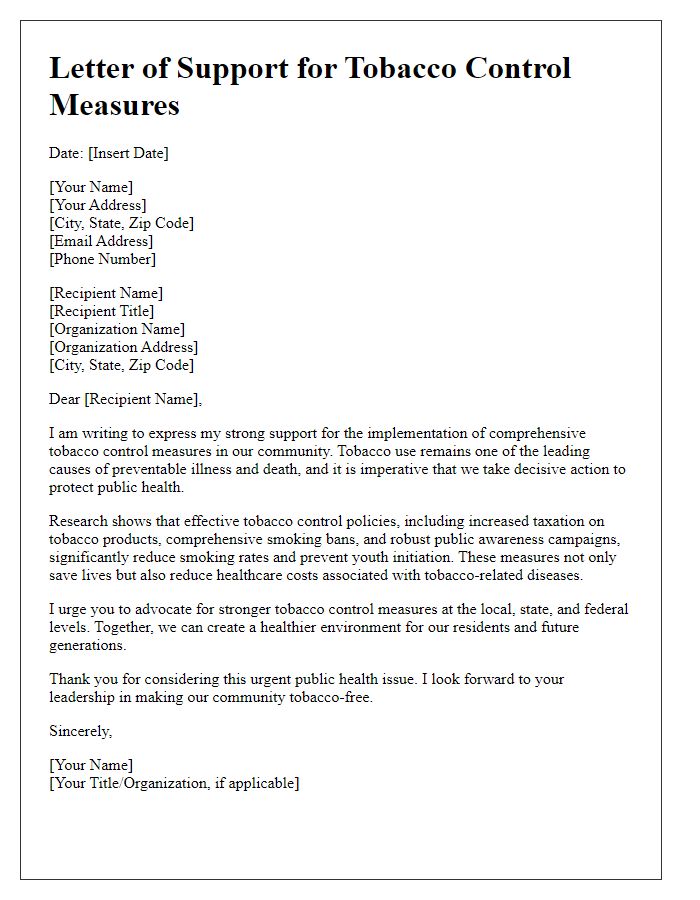
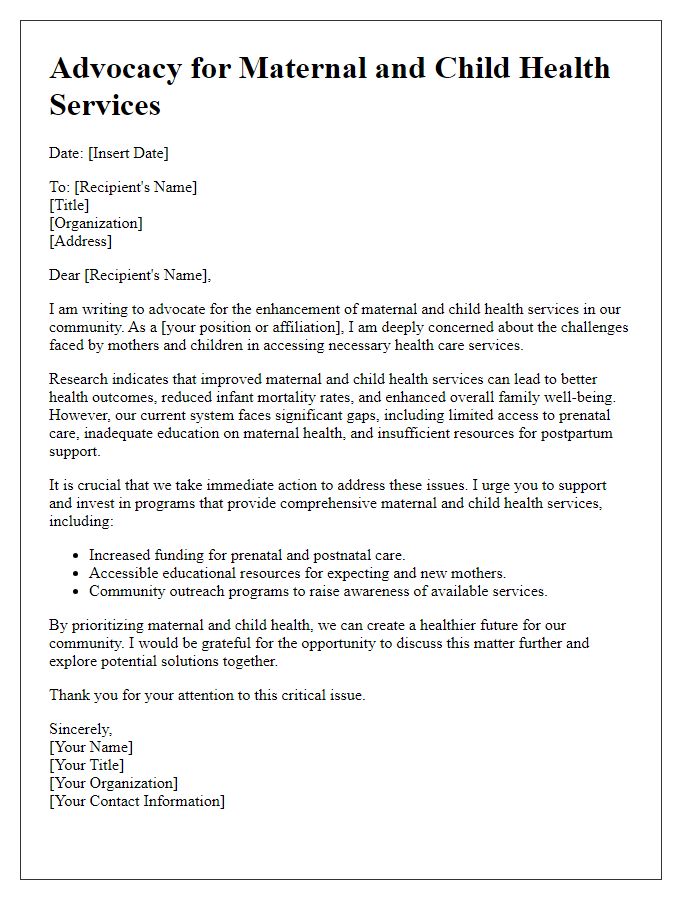


Comments